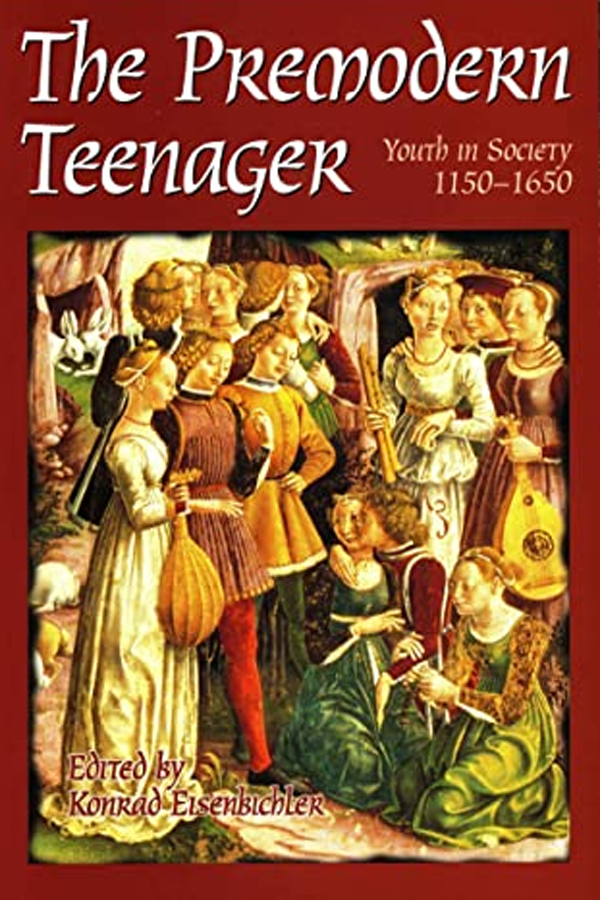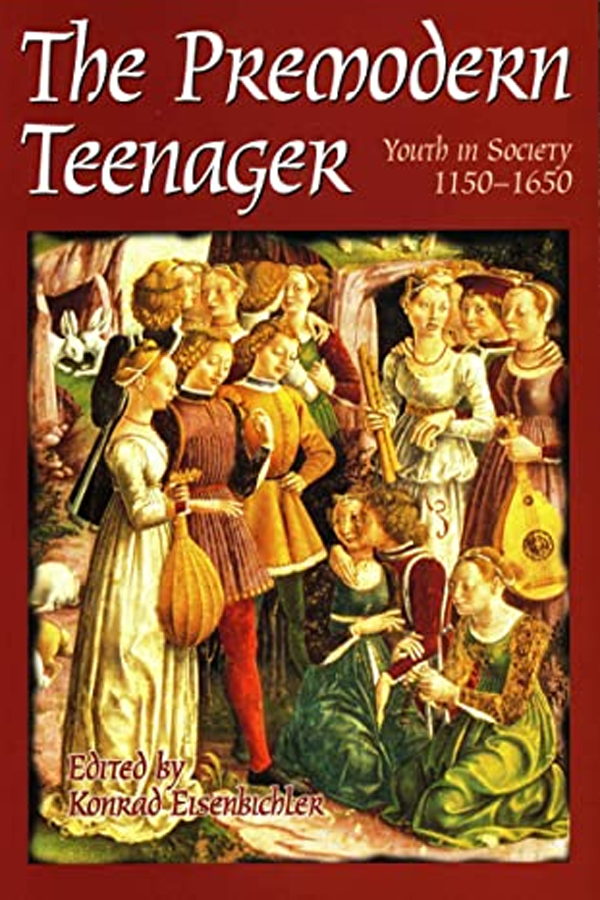The Premodern Teenager: Youth in Society 1150-1650
Edited by Konrad Eisenbichler - ES01
Overview
While a lot of excellent work has been carried out in the past four decades on premodern children and childhood, few scholars have focused on post-pubescent youth in the Middle Ages and the Renaissance. The seventeen essays in this volume seek to redress this imbalance by offering a sampling of the research currently underway in this field and of the various questions and methodologies that could be useful in the study of “teenagers” in the 13th-17th centuries.
Several key issues serve as sign-posts for the collection. The first is the question of terminology and definitions. The second is the ritual role given to youth in what was, in most cases across Europe, a gerontocracy. The third is the question of education. The fourth is the fascination young people have for the military. The fifth is the irrepressible interest they have for sex. And the last section looks at the inevitable problem of teens in trouble, be it medical, social, or legal.
There is no unifying methodology in this volume. The collection is not meant to argue in favour of a particular school, but in favour of a new look, from a variety of angles, at a little studied area. The eclecticism of this volume thus offers a tantalizing array of entry points into the question of adolescence in pre- and early modern times.
Konrad Eisenbichler teaches Renaissance Studies and Italian at the University of Toronto. His volume The Boys of the Archangel Raphael. A Youth Confraternity in Florence, 1411-1785 (Toronto, 1998) was awarded the Howard R. Marraro Prize from the American Catholic Historical Association.
349 pp.
ISBN: 978-0-7727-2018-4
Published: 2002
Contents
Illustrations
List of Contributors
Konrad Eisenbichler, "Introduction"
Identifying Youths: Terminology and Sub-Culture
1. Ilaria Taddei, "Puerizia, Adolescenza and Giovinezza: Images and Conceptions of Youth in Florentine Society During the Renaissance"
2. Ludovica Sebregondi , "Clothes and Teenagers: What Young Men Wore in Fifteenth-Century Florence"
3. Roni Weinstein, "'Thus Will Giovani Do.' Jewish Youth Sub-Culture in Early Modern Italy"
Rituals of Youth
4. Ottavia Niccoli, "Rituals of Youth: Love, Play, and Violence in Tridentine Bologna"
5. Virginia A. Cole, "Ritual, Religion, and the Royal Teenager: The Case of Edward II of England"
6. Robert Zajkowski, "Henry VI of England: The Ritual Education of an Adolescent Prince"
Educating the Young
7. Mark H. Lawhorn, "Taking Pains for the Prince: Age, Patronage, and Penal Surrogacy in Samuel Rowley's When You See Me, You Know Me"
8. Christopher Carlsmith, "Troublesome Teens: Approaches to Educating and Disciplining Youth in Early Modern Italy"
9. Marian Rothstein, "Teen Knights: Interpreting Precocity in Early Modern Life-Stories"
Teenaged Soldiers
10. Ruth Mazo Karras, "Young Knights Under the Feminine Gaze"
11. Kelly DeVries, "Teenagers at War During the Middle Ages"
Sex and Sexuality
12. Fiona Harris Stoertz, "Sex and the Medieval Adolescent"
13. Philip D. Col!ington, "'Like One That Fears Robbing': Cuckoldry Anxiety and The Two Gentlemen of Verona"
14. Ursula Potter, "Greensickness in Romeo and Juliet: Considerations on a Sixteenth-Century Disease of Virgins"
Teens in Trouble
15. Carol Lansing, "Girls in Trouble in Late Medieval Bologna"
16. John Carmi Parsons, "The Medieval Aristocratic Teenaged Female: Adolescent or Adult?"
17. John Leland, "Leaving Town to Work for the Family: The Counter-Migration of Teenaged Servants in Fourteenth-Century England"
Reviews
Renaissance Quarterly, 57:1 (Spring 2004), pp. 289-291. Reviewed by Margaret L. King.
The Sixteenth Century Journal, 35:1 (Spring 2004), pp. 219-220. Reviewed by Christopher R. Corley.
CHOICE: Current Reviews for Academic Libraries, 40:5 (January 2003), p. 893.
University of Toronto Quarterly, 74:1 (2004-2005), pp. 387-389. Reviewed by Carla Freccero.
Couldn't load pickup availability


